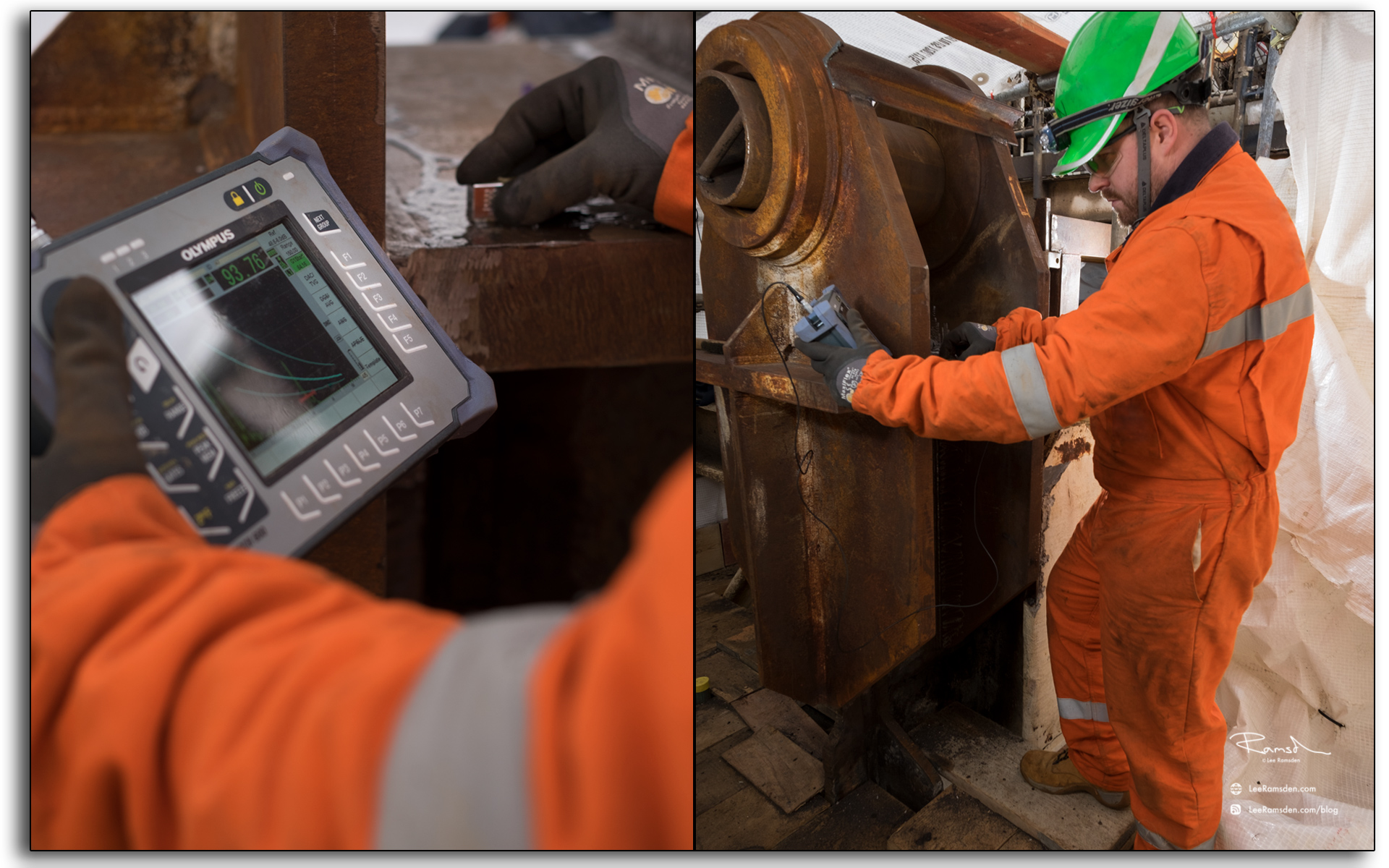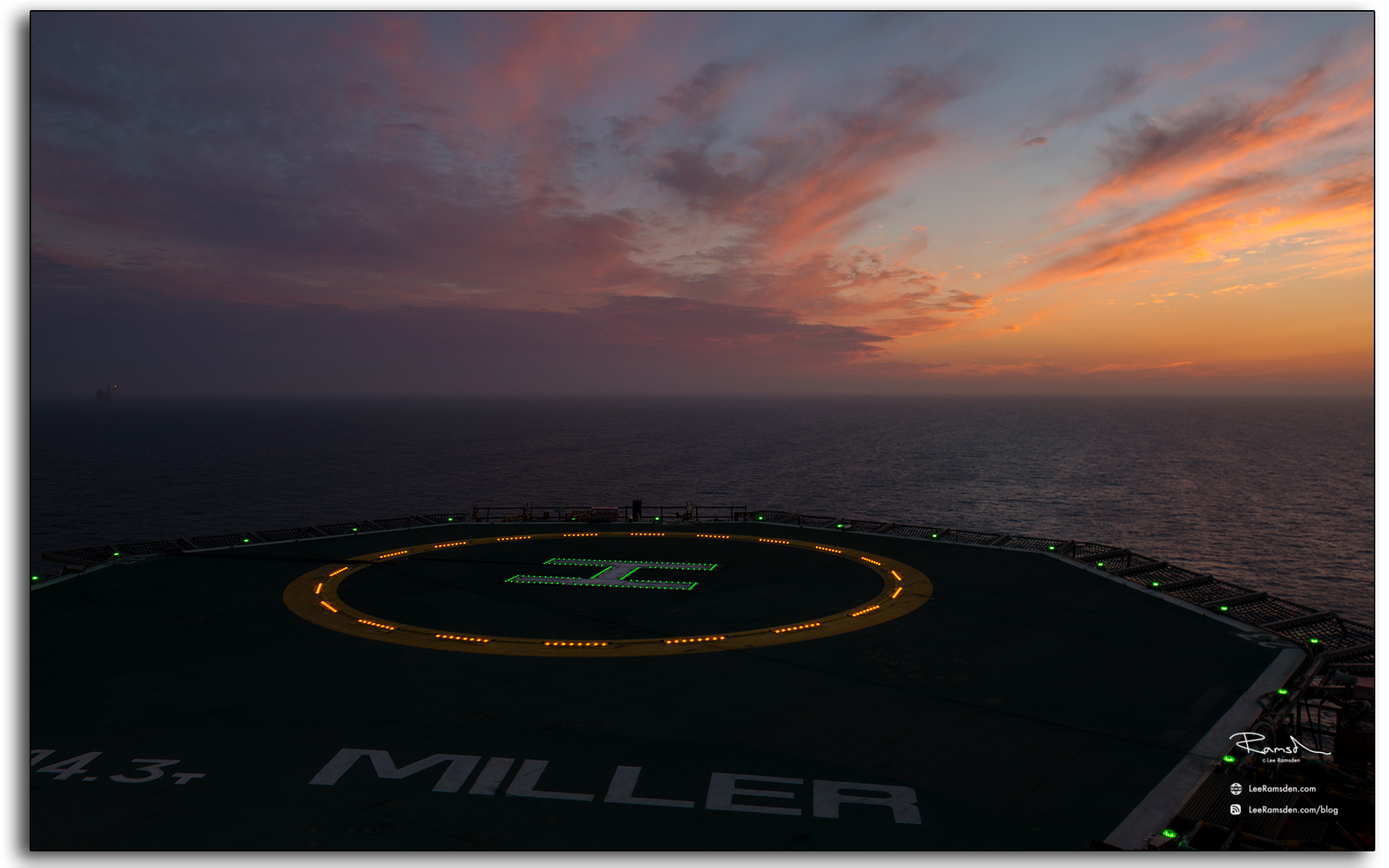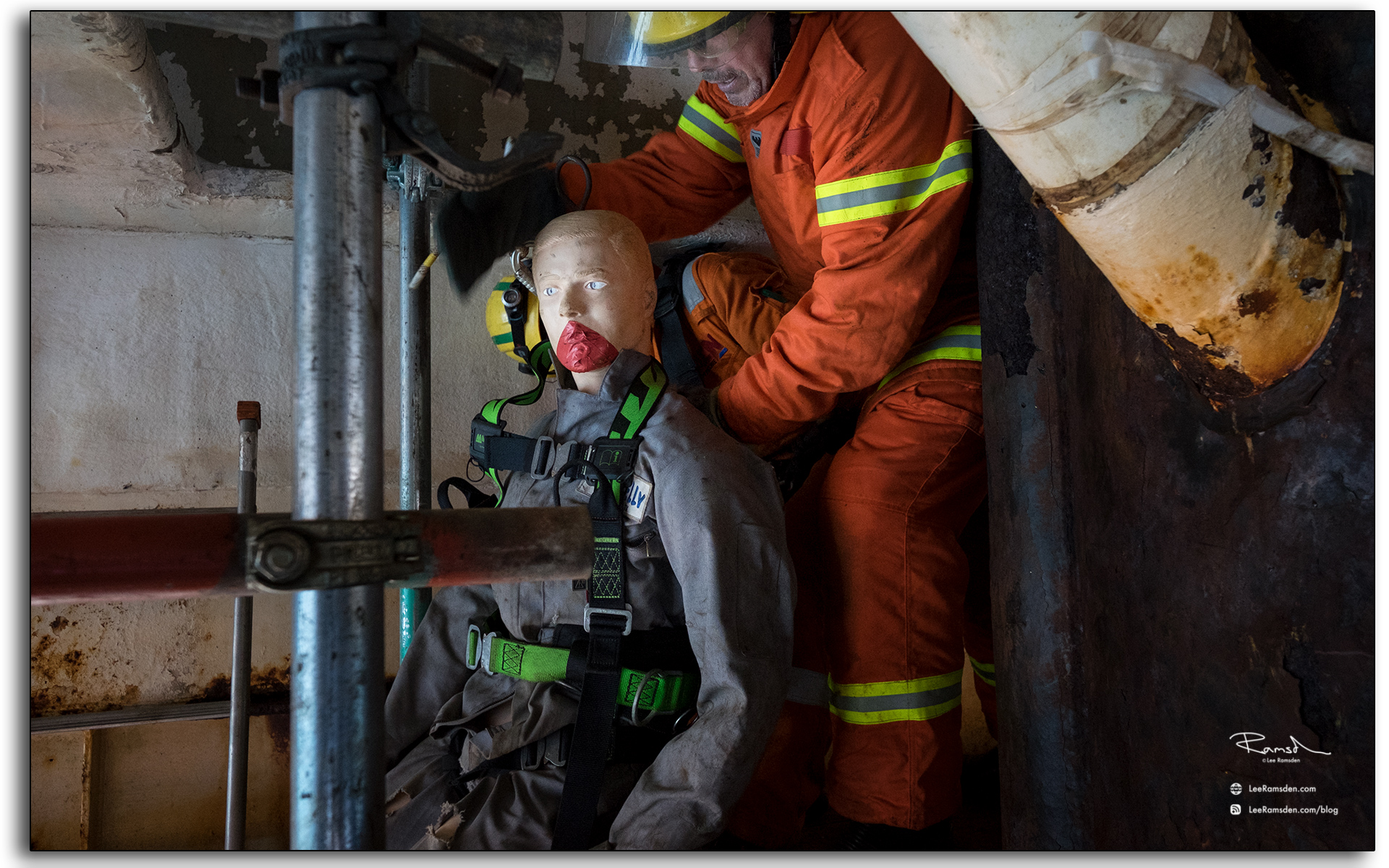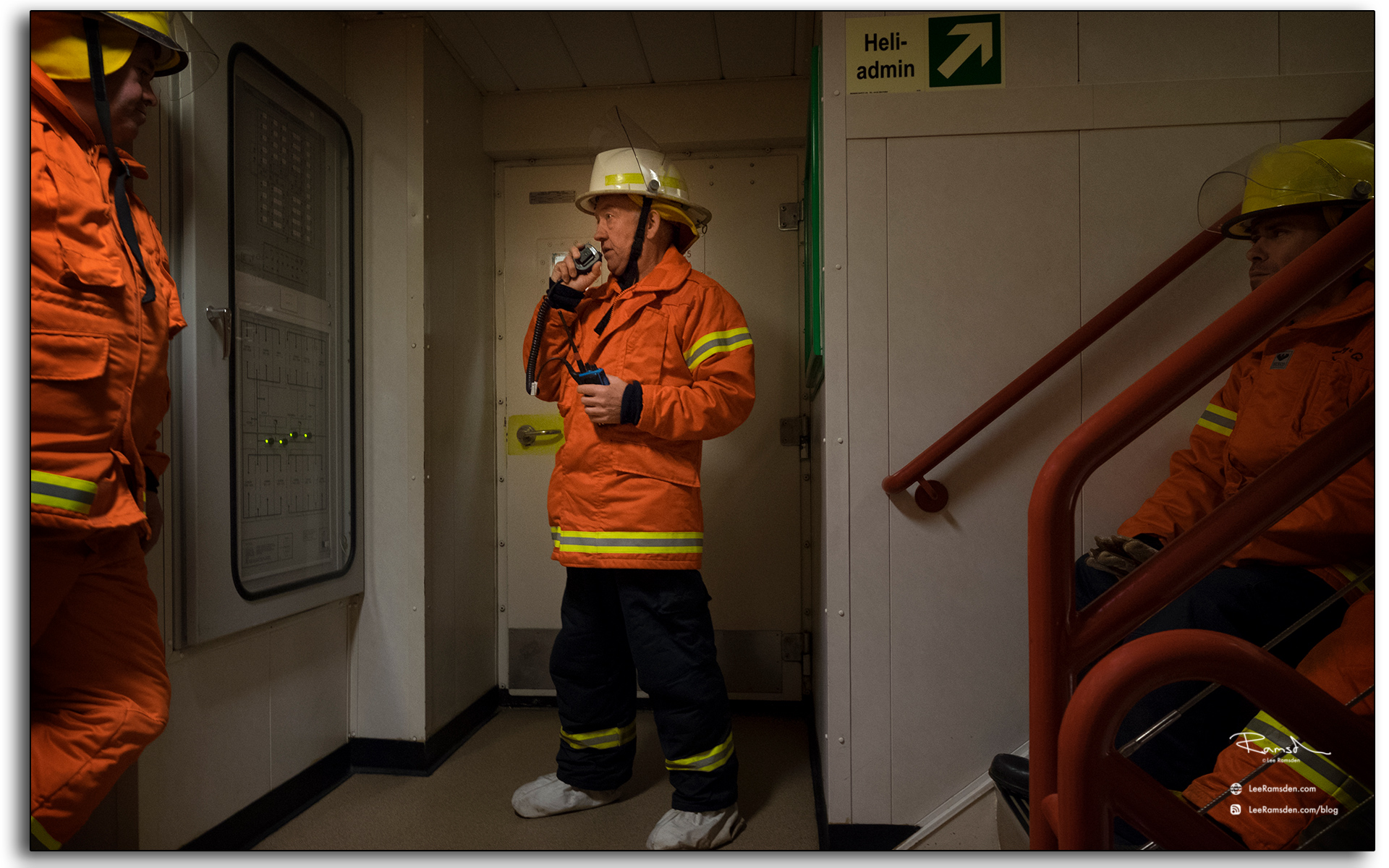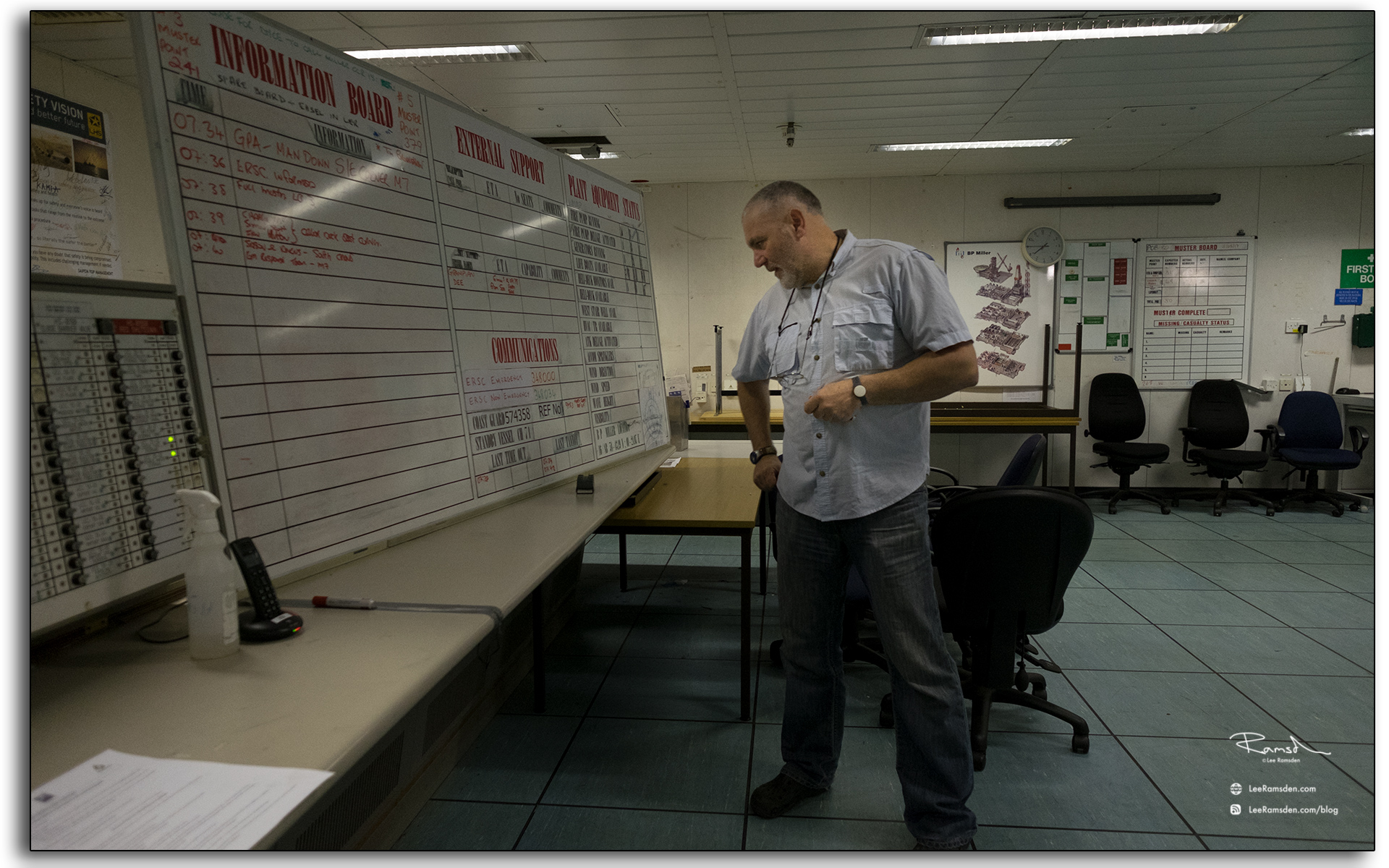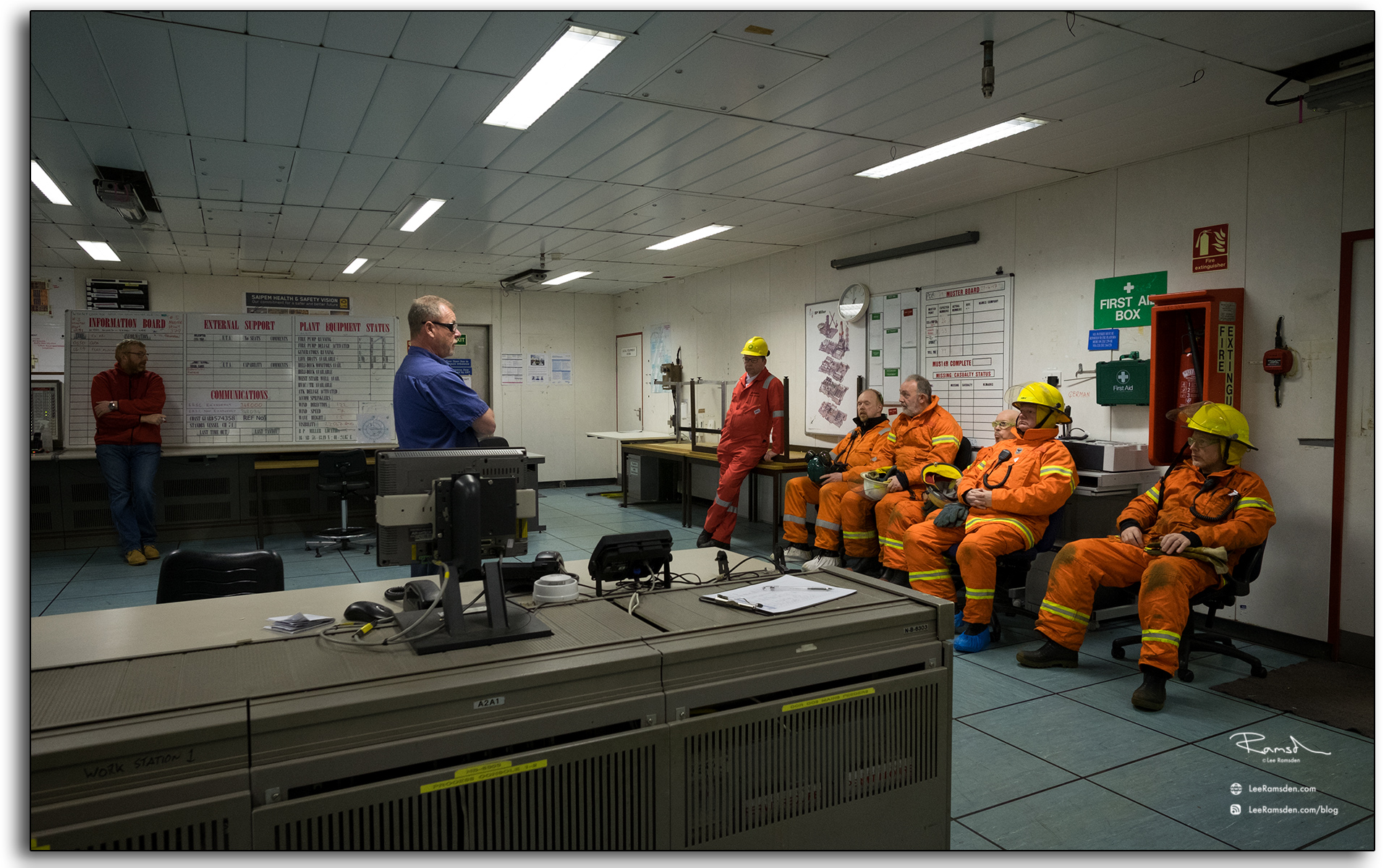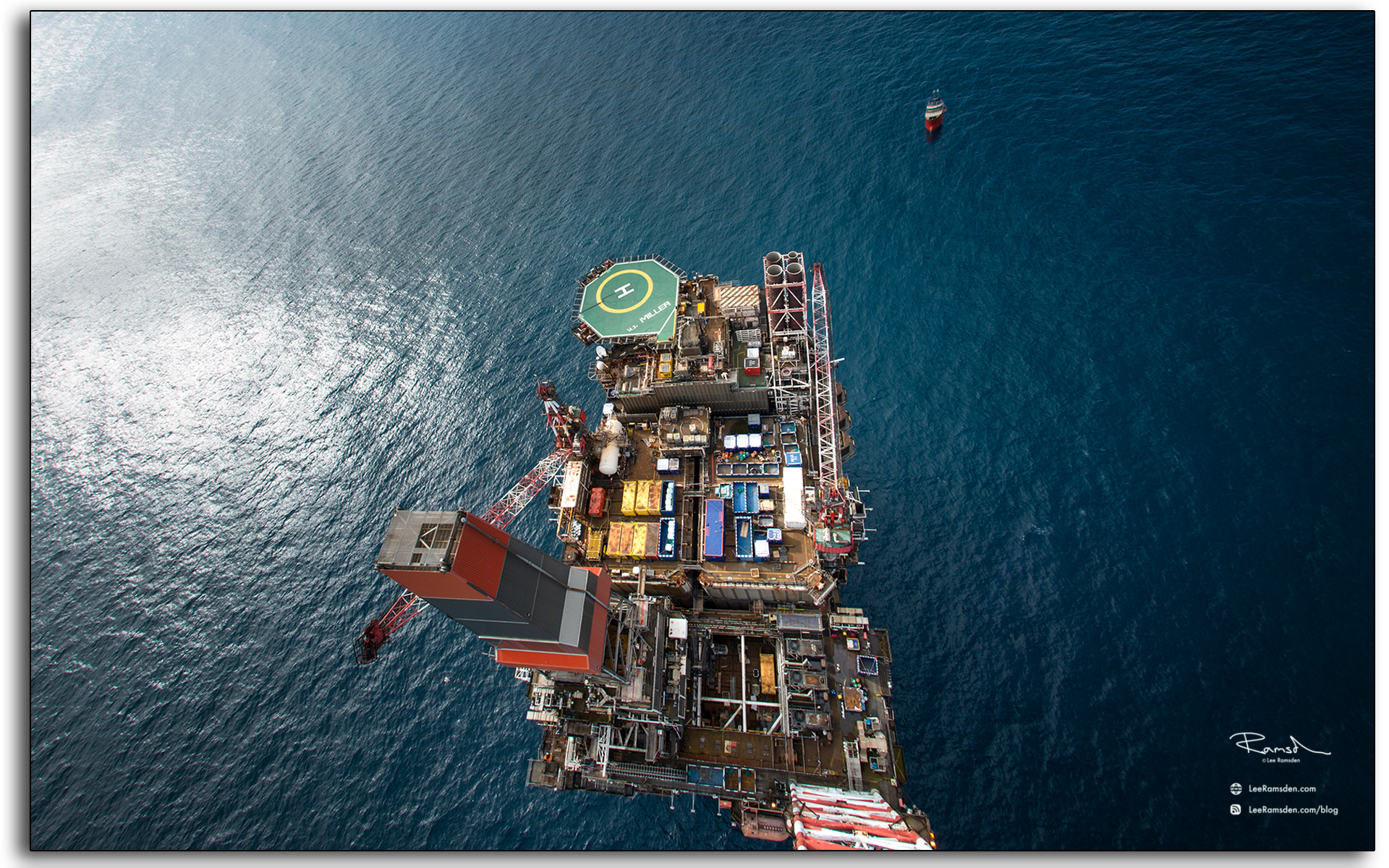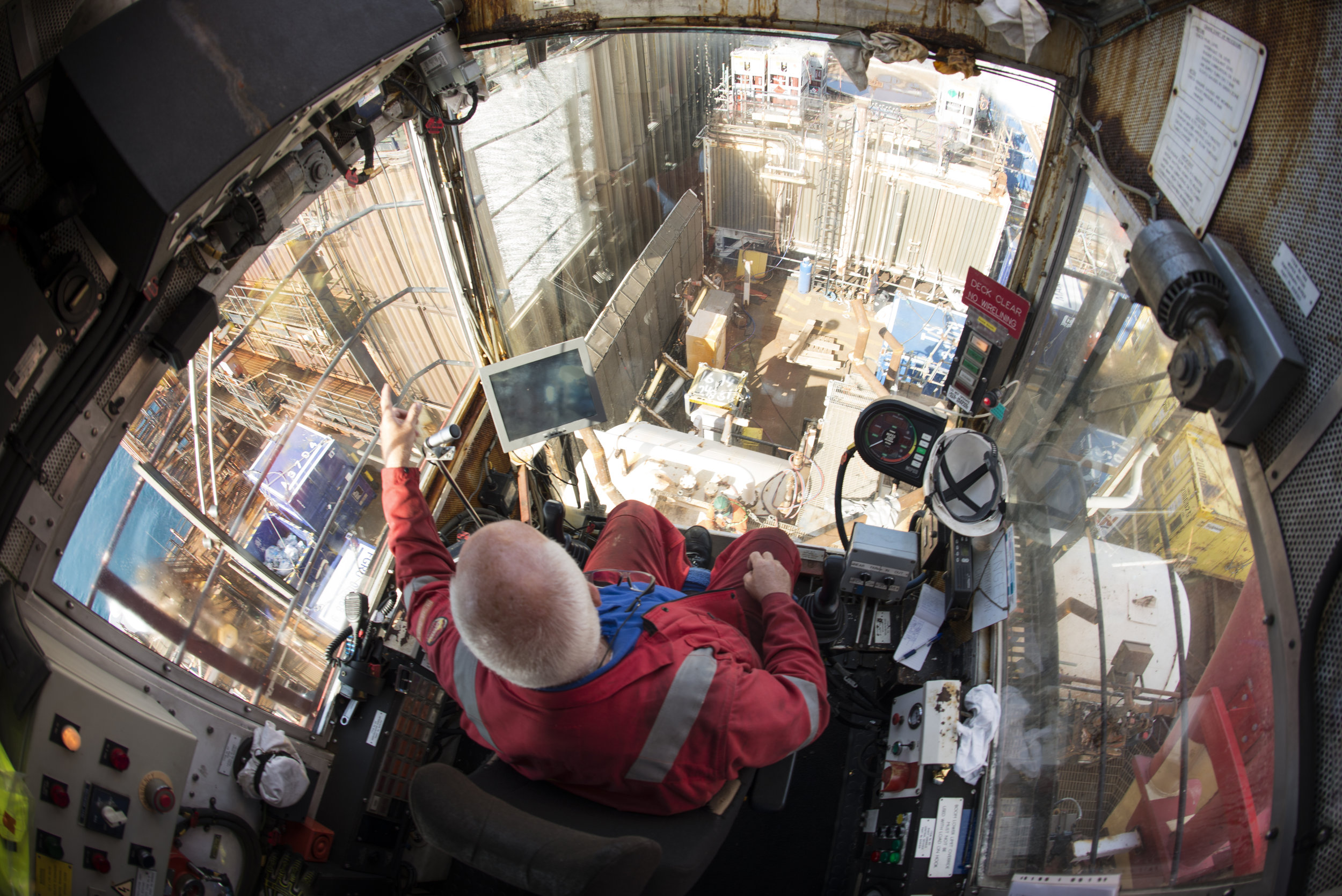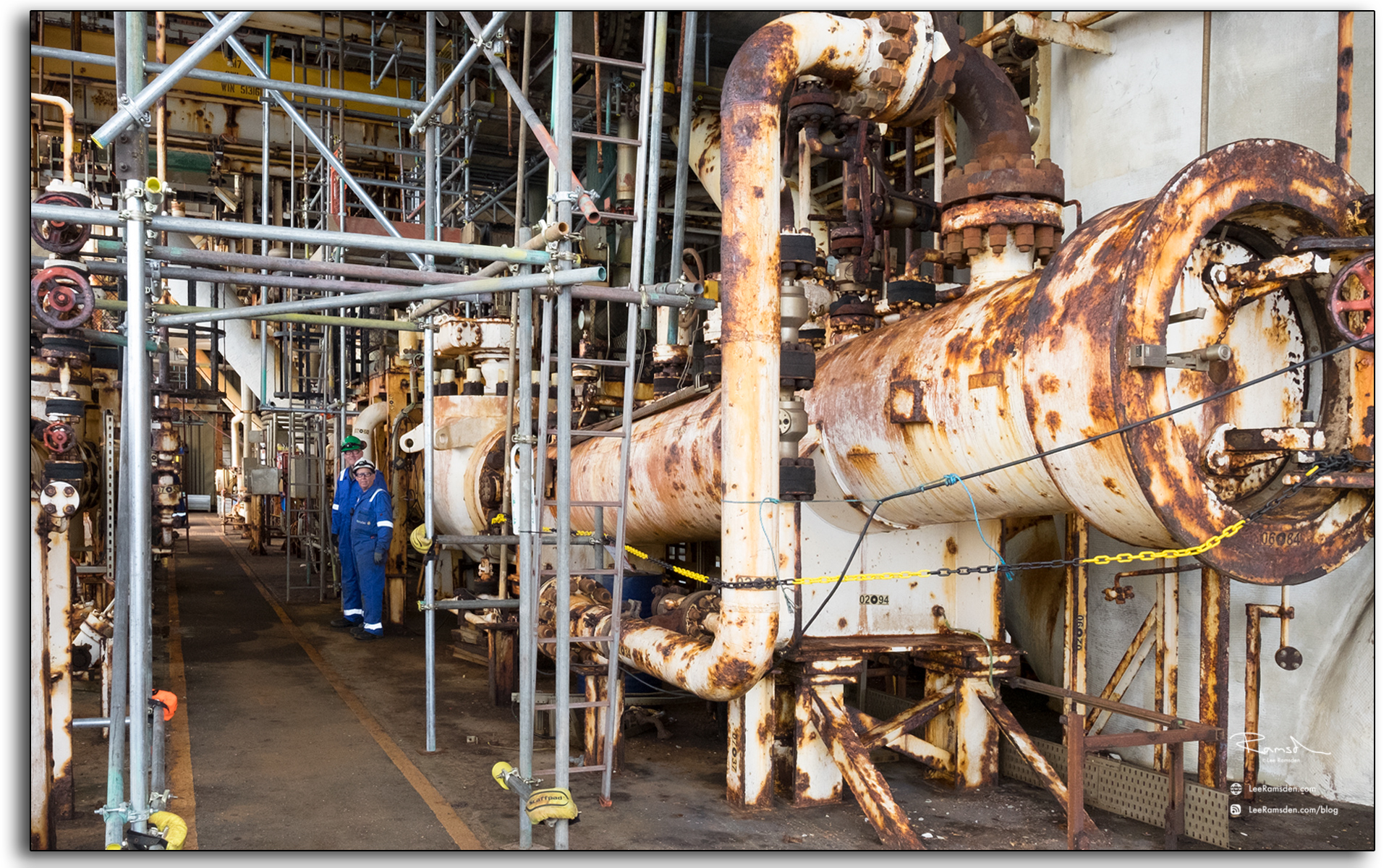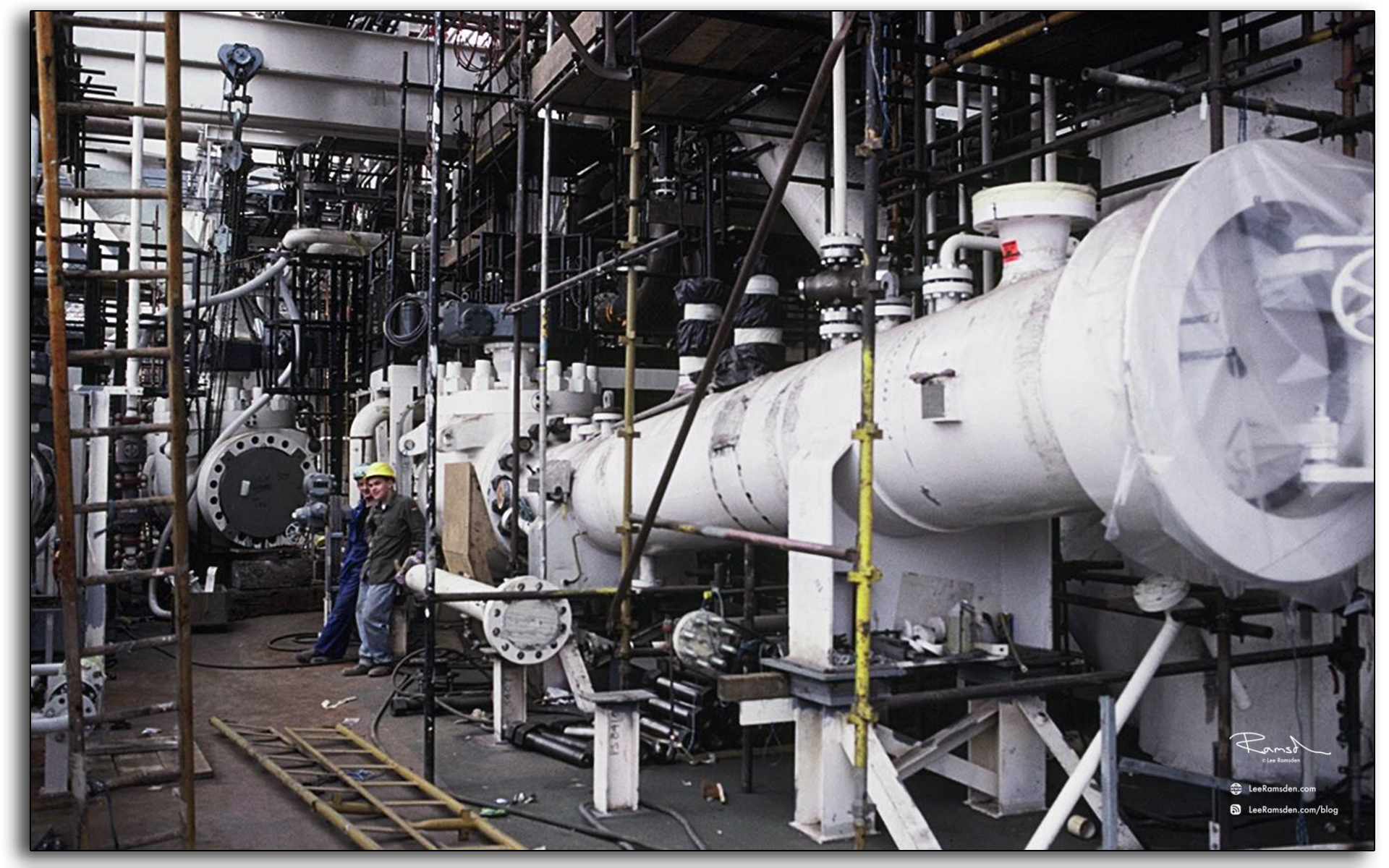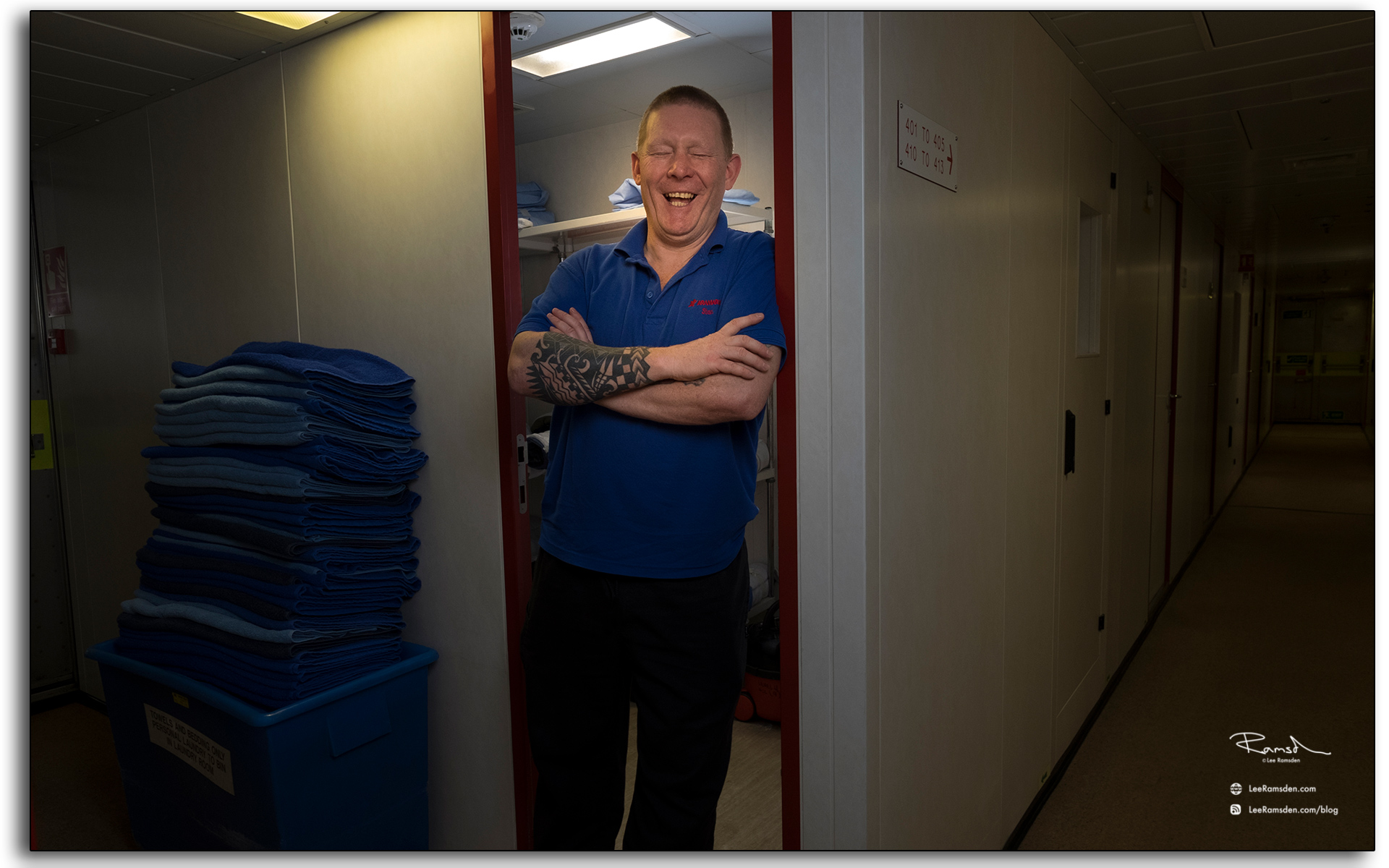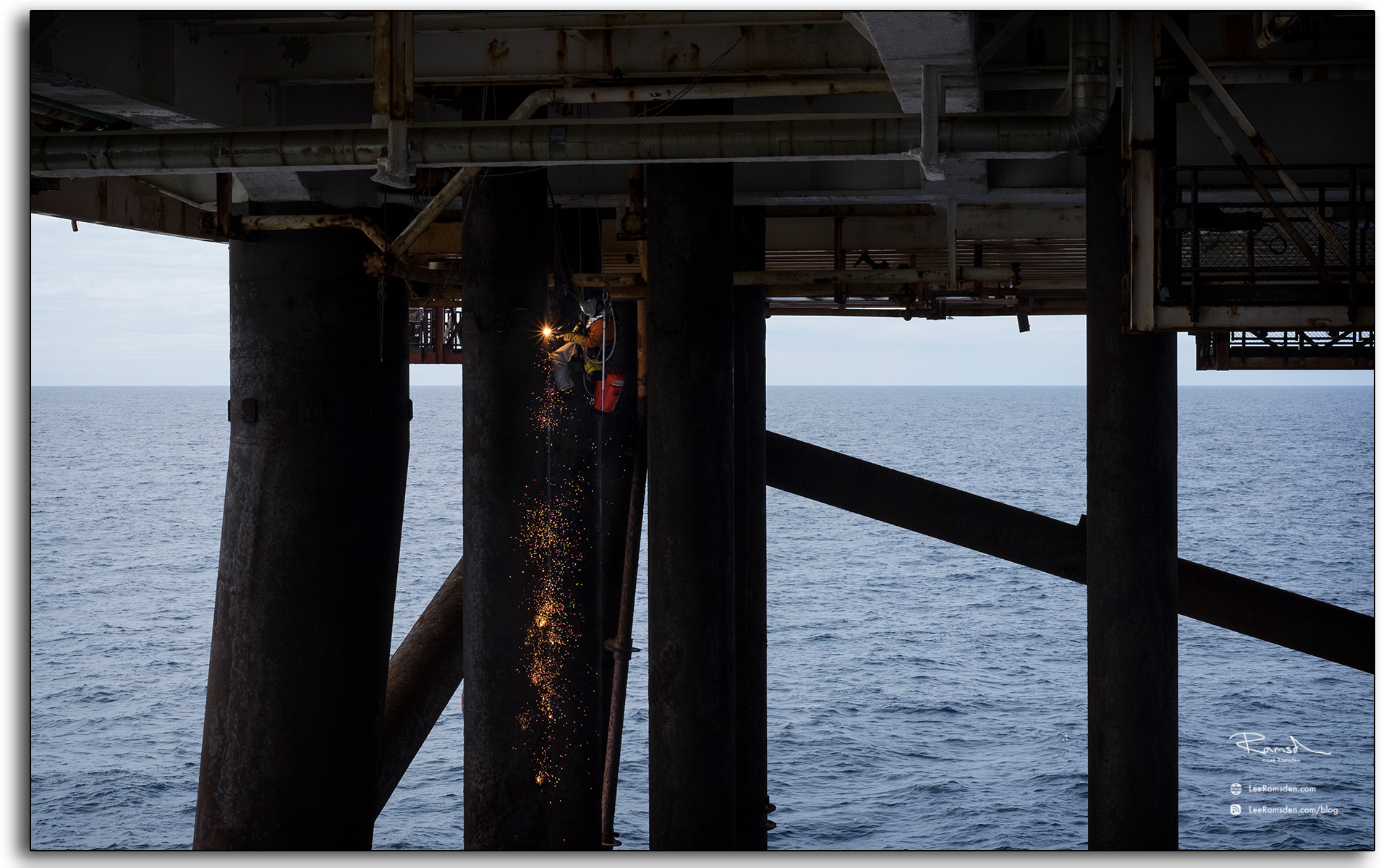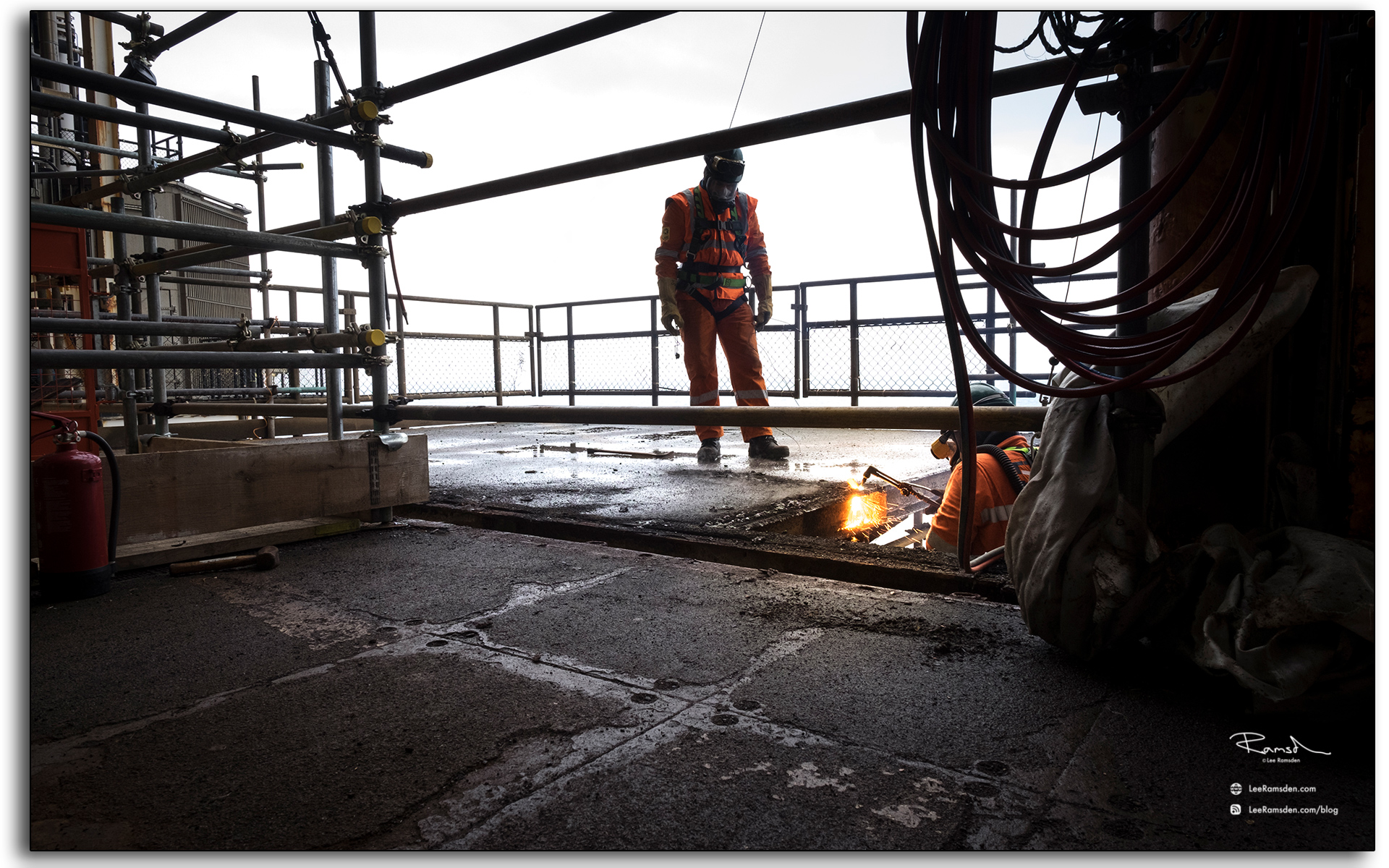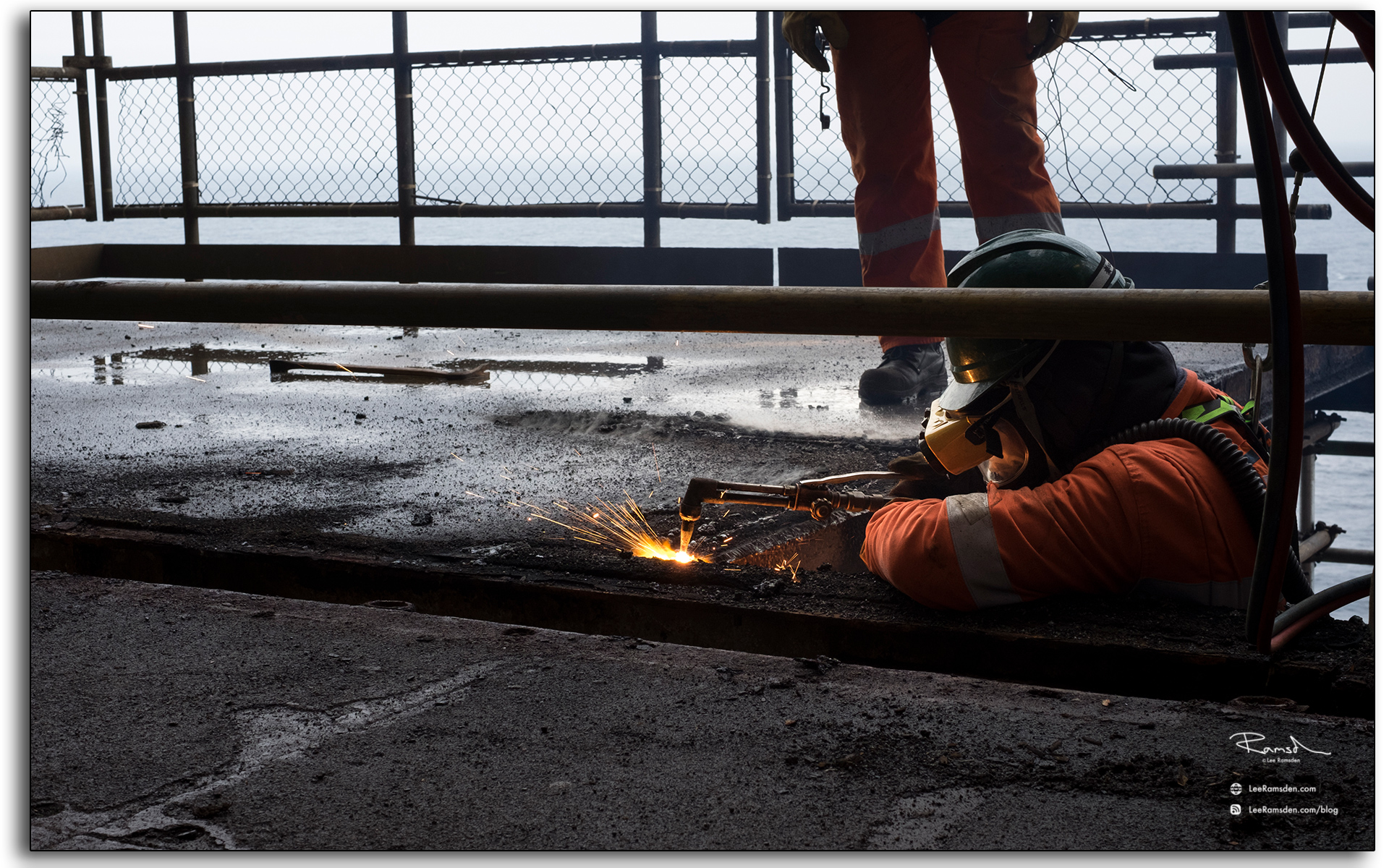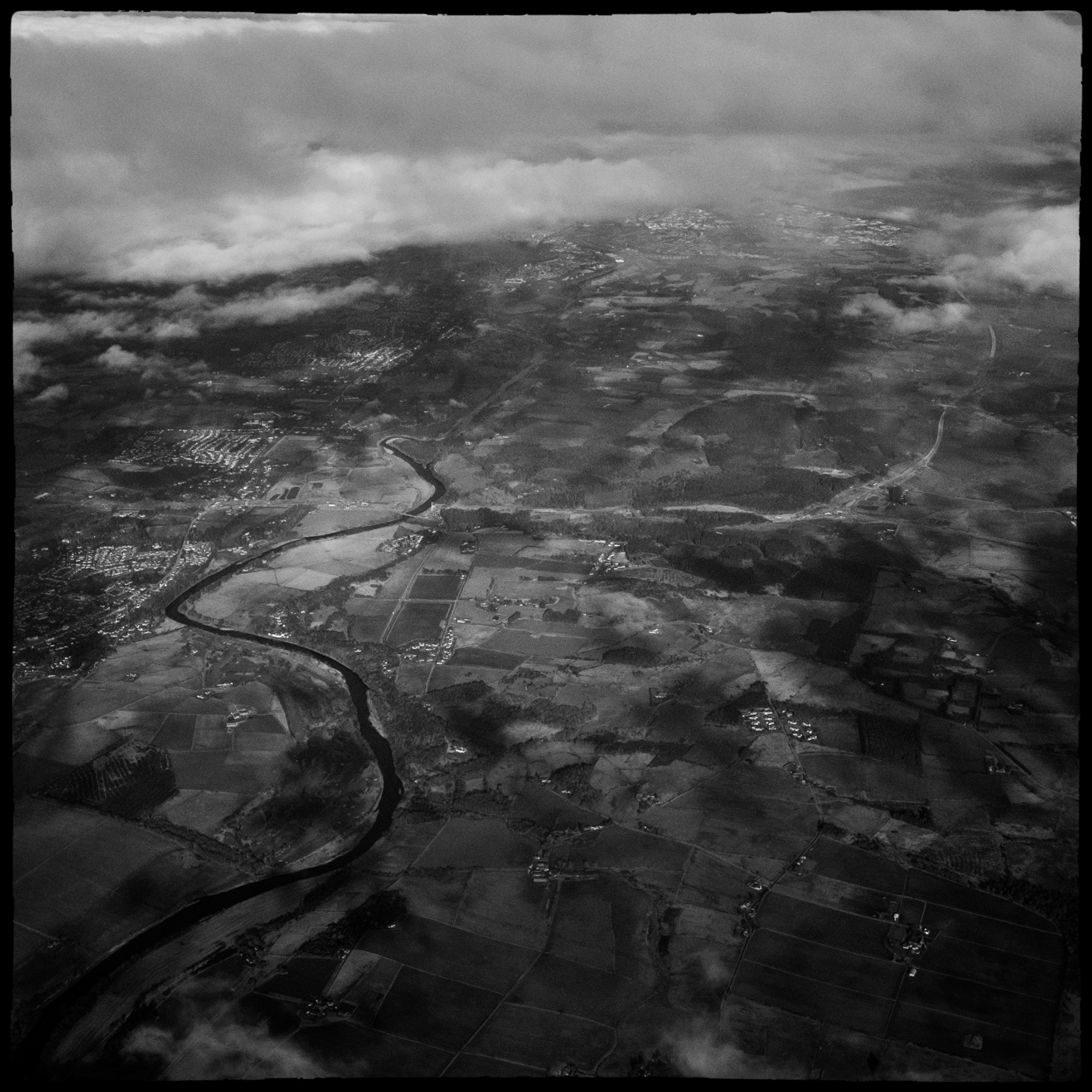Offshore NDT (non-destructive testing) technician. Here he is testing the quality of the welds to ensure that they will not fail when a large load will be applied.
Oil and gas Industrial Medic.
Hello,
This is the platform medic.
In the UK oil and gas industry there is a requirement for all installations to have sufficient medical cover and provisions.
The offshore medics role -
Treat people working on an offshore oil or gas rig for any injuries or illnesses.
Provide medical care for anyone on the rig or platform who has an accident and make sure that people are fit and safe to work. The health, safety and welfare of all those working on the rig would be the medics responsibility. They also carry out administrative tasks.
Provide 24-hour medical care for the crew
Carry out routine health checks
Treat illnesses and minor wounds
Keep accurate medical records
Train other people on the rig in first aid
Order new supplies of medicines and equipment
Carry out health promotion activities
Advise on health and safety issues
Arrange for very ill people to be taken back to land for treatment
The medic advises the senior managers if they thought a person was not fit for work or might affect other people’s safety.
If someone had an injury or illness that you were not sure how to treat, they would phone the onshore company doctor for advice.
Oil and gas industry Tool box talks.
Above is a supervisor conducting a tool box talk with his team, on the task in hand.
A Toolbox Talk is an informal safety meeting that focuses on safety topics related to the specific job, such as workplace hazards and safe work practices. Meetings are normally short in duration and are generally conducted at the job site prior to the commencement of a job or work shift. It is one of the very effective methods to refresh workers' knowledge, cover last minute safety checks, and exchange information with the experienced workers. Toolbox Talks are also intended to facilitate health and safety discussions on the job site and promote the organization’s safety culture.
Offshore standby vessel.
In the UK oil and gas industry, it is a requirement for a standby vessel to be present. These vessels primarily cover helicopter operations and if any work has to be conducted where there is a potential to fail to sea. (known as outboard work). These vessels sit there, day in day out, no matter the weather they provide us with emergency cover and would spring to life and help rescue if the unlikely event ever arose.
Testing of fire equipment.
Along with practicing emergency exercises, an oil and gas platform regularly tests its emergency equipment. Today we see the helideck fire fighting equipment being tested.
Tannoy being given, to warn all personnel of cascading water and that fire pumps are about to start.
Technician remote starting pumps from different panels.
BP Miller oil and gas installation Helideck.
Today id like to show a few single images. In recent times the Civil aviation has instructed for all UK oil and gas installations to install specific lighting set up on their helidecks, if they require flights in the hours of darkness.
The illuminated helideck against a North Sea sunset makes for quite an interesting image.
Thanks
Lee
Offshore Emergency rope access response exercise.
Hello,
Today we see another emergency exercise. As you can see in the oil and gas industry we regularly drill and test the emergency response plan.
It is the old adage - fail to prepare, prepare to fail.
It is a legal requirement to have a plan on what to do in an emergency, but does it work?
Testing different scenarios on a regularly basis ensures that the plan works, and keeps the emergency response team skills fresh.
Todays scenario, is in the above image. In this case we are using an inanimate dummy. But it is to practice how to rescue a rope access worker, working under deck.
IRATA rope access technician donning his harness.
The rope access supervisor, using his equipment to haul the pretend casualty up to the deck.
Platform fire team member safely has hands on the practice casualty.
The platform Medic and his first aid team, practice administrating first aid, and using the different types of stretchers required.
Platform medic, coordinates the fire team members on lifting the stretcher and places it into the "frog", to lift the practice casualty from the lower levels of the platform, up to the installation sickbay.
Fire team leader, in communications with the crane operator. They safely lift the practice casualty to the platform sickbay.
Fire team emergency response exercise.
Hello,
Following on from last weeks post, today we see the Emergency response team practicing if there was an emergency inside the accommodation.
Above is the fire team leader, his role here is directing his fire team, maintaining communications between his team, and the platform control room.
The O.I.M setting the scene, and briefing the emergency fire team.
For exercise - there has been indication of smoke inside the accommodation.
Fire team leader, briefing his team on a suspected accommodation fire indicated on the panel.
Fire team, updating the leader with information.
Fire team, practicing safe fire door drills.
O.I.M and his Deputy, reading through the Emergency response plan.
O.I.M updating the platform personnel, on the situation. The deputy O.I.M calling the coast guard, for exercise purposes informing them of our drill, and establishing helicopter response times.
The scribe, updates relevant information, like wind direction and sea conditions incase we needed to evacuate.
Offshore control room, emergency exercise.
Hello,
Over the next couple of posts, ill like to show the different roles involved in the unlikely event of an emergency occuring. Today I will start with the control room.
The alarms have sounded, and a scenario has been set. Everyone on board the platform is making their way to their allocated muster points,
For exercise - We have a missing person and the O.I.M is briefing the emergency response team and what actions they are to take and provide them with information.
For exercise, for exercise - the O.I.M keeps all persons on board updated on the situation.
The scribe regularly logs the situation and ties all the information together in one place, to make it easier for the manager to make their decisions.
The O.I.M and his Deputy O.I.M, reading through the Emergency response plan, making descisions on what actions are required.
Highest point in the north sea.
The BP Miller, has the tallest flare stack in the North Sea, at 162m high,
(4m taller than Blackpool tower)
Caught our breath back, after a lung busted 15 ladder climb.
Image of the Brae Bravo platform, from the top of BP Miller flare.
Crane operator, working the supply vessel.
Hello,
Today ill like to show how an oil rig offloads new supplies, which range from equipment, tools and most importantly food!
While it is down to the crane operator to offload the containers from the supply vessel, it is all orchestrated by the offshore materials coordinator.
The materials controller duties:
Arranging for the despatch and delivery of materials and goods
Making sure that materials and equipment have the necessary certification.
Ensuring that relevant stores are aware of deliveries and that they allocate space for goods on arrival.
Chasing up suppliers to ensure goods and materials are delivered on time to meet business needs.
Maintaining the materials management system.
Preparing reports on materials receipt and delivery and on the performance of suppliers
Acting as a focal point for suppliers and internal departments for questions about materials scheduling, problems, and the like.
Norwegian supply vessel crew, unhooking the containers.
Oil rig boxing.
25 years of rust, in the North sea.
Here, are two images 25 years apart.
The images are of the "pig launchers", on the cellar deck of the BP Miller platform,
one while the platform was being commissioned, and put together,
and the second, while decommissioning.
Thanks
Lee
Offshore, oil and gas rig catering crew.
Today we meet, the small team involved in feeding and looking after all 80 workers, on a North Sea oil and gas platform.
These guys do a fantastic job, with such a small team in cleaning, preparing meals and trying to keep moral high for a large crew of guys. Who are working hard in all weathers, away from home for long periods, missing their families.
It is un-measurable their involvement, but any rig worker will tell you, that a clean accommodation and a good hearty meal, makes for a happy crew.
Roast beef, and Yorkshire puddings... must be Sunday!
BP Miller decommissioning core crew.
This fine body of men....
Are one half of the Petrofac core crew involved with the mammoth task of decommissioning and removing a north sea oil rig. While this crew is offshore, our opposite numbers are at home on leave.
This group is made up of the management, technical authorities, and lead technicians, that are required on board to keep a rig running safely.
Petrofac O.I.M.
Petrofac Project Manager.
Petrofac Project Manager.
The above, were the Petrofac offshore management for the project, all with different attributes and experiences, but all shared one key value - people skills.
You can be the most knowledgeable leader, but if your team are not supporting you, then you might as well give up.
These gents led by example, with integrity, and support. When the chips were down, could pick the whole team back up. Inspirational.
Now we called in back to backs and so all the core crew now on board, for the task of shutting down the platform. A mammoth task, completed with safety at the forefront and ahead of the schedule.
Offshore - O.I.M
The Petrofac O.I.M for the BP Miller decommissioning project.
The Offshore Installation Manager (OIM) is the most senior manager of an offshore platform operating on the UKCS.
Many offshore operators have adopted this UK offshore management model and title and applied it to their operations in all global regions irrespective of the local regulations in force.
In the UK the individual must be officially registered as an OIM with the Offshore Safety Division of the Health and Safety Executive and the OIM is responsible for the health, welfare and safety of the personnel on board the installation, whether a drilling rig, production platform or a support vessel (e.g. a flotel).
Rig removal. North sea.
North sea oil and gas rig.
Hello, long time no see...
Well... Hello, its been a while.
Lets catch up,
Most will know, that my day job is working in the oil and gas industry.
Since January i have been involved with the decommissioning of a north sea oil and gas rig, called the BP Miller.
The picture taking had to take a back seat. The next post will explain in more detail what the project entails.
But stick around, i have uploaded lots of content which will be coming out on a weekly basis, a new post every Sunday.
So please subscribe, and follow the story and images of life offshore in the oil and gas industry on a decommissioning project.
Thanks
Lee
Manchester Airport.
Good Morning,
As most are aware with my day job, i spend half my life at airports traveling. And so this time i brought my little Fuji X-T1 along for a ride, and took some shots while i was awaiting to board the plane.
Thanks
Lee

